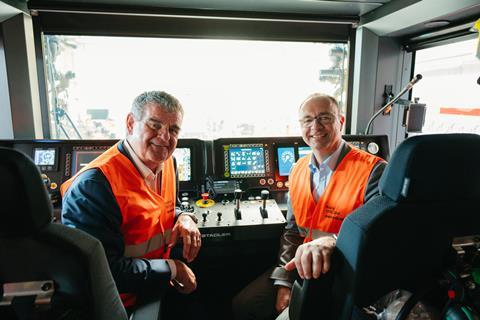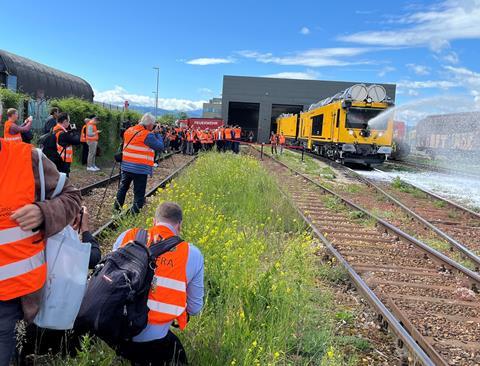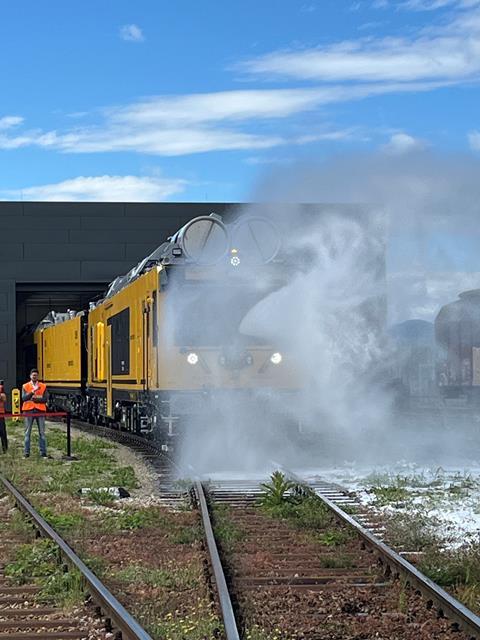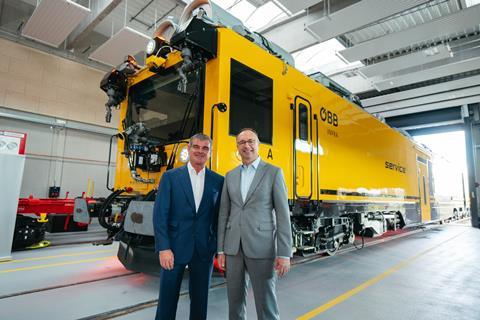
AUSTRIA: Stadler and Austrian Federal Railways have unveiled the first Servicejet multifunctional firefighting and rescue train, which the manufacturer says is tailor-made ‘for the worst-case scenario’ of a fire in a tunnel.
The Rail Equipment GmbH subsidiary of infrastructure manager ÖBB-Infrastruktur has ordered 18 of the trains, which will be stationed at the portals of the Koralm, Semmering and Brenner base tunnels and will also replace ÖBB’s first generation of fire-fighting and rescue vehicles.
They are designed to get through a smoke-filled tunnel to the source of a fire, rescue people, tow away damaged vehicles, fight fires and get back to safety.

The 66·5 m long three-car train can carry more than 300 seated and standing people in an emergency. The interior has a slight overpressure inside to keep it free of smoke in tunnels, and HVAC with filters to protect people from gases.

There are 18 seats with self-contained breathing apparatus brackets for firefighters, and the driver’s cab is protected by an external water spray system.
The train can be loaded with roll containers of equipment such as portable pumps, forest firefighting equipment, breathing apparatus and protective suits. These are loaded at ÖBB Infrastruktur support points and unloaded using built-in lifts to enable a rapid response to a variety of scenarios.

There are two firefighting systems. A 100 bar high-pressure system generates fine mist to cool a tunnel tube or moisten the lineside to prevent fire and a 10 bar system for traditional firefighting.

The train carries 40 000 litres of water and 1 200 litres of foam concentrate. This can be released via one normal and two high pressure extinguishers, which are mounted at the end of the train and can be controlled individually from the cab. There are also two jet fans on the roof which can be used for misting and to assist evacuation by creating counter-pressure in a smoke-filled tunnel and preventing the flow from reversing. Powerful searchlights and thermal imaging cameras are installed for search and rescue operations.
The electric hybrid drive is able to use 15 kV 16·7 Hz overhead electrification, battery and diesel power, with a maximum speed of 160 km/h in both directions.

The vehicles were developed and produced at Stadler sites at Bussnang and St Margrethen in Switzerland. ‘We have put a highly innovative concept on the rails that meets ÖBB Infrastruktur’s specifications and satisfies all the customer’s quality and safety requirements’, said Stadler Chairman Peter Spuhler when the first train was unveiled at ÖBB’s training campus in St Pölten on May 17.
The trains will be approved for use across Austria and in Germany, with the first deployment to be at the 33 km base tunnel on the Koralmbahn which will link Klagenfurt with Graz when it opens in December 2025.

















